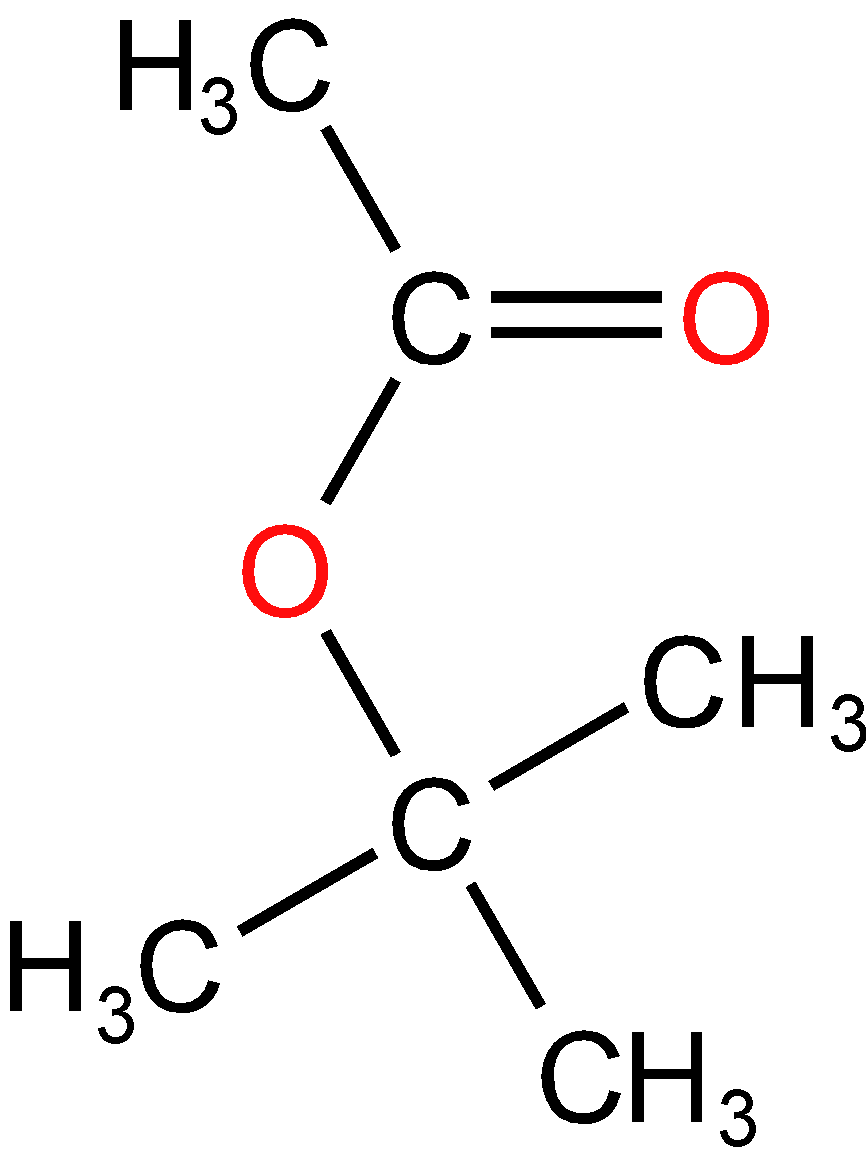
Indicate the organic structure for the product expected when 2-methylpropene is heated with the acetyl chloride in presence of anhydrous zinc chloride
A. $CH_3-CCH_3Cl-CH_2-CO-CH_3 $

B. $CH_3-CHCH_3-CH_2-CO-CH_3$

C. $CH_3-CO-O-C{(CH_3)}_3$

D. $ CH_3-CO-C{\rm CH}_3=CH_2$





Answer
349.5k+ views
Hint: The given reaction is an addition reaction of alkene. The addition of alkenes follows Markovnikov's rule. Markownikoff’s rule says that the attacking nucleophile will get attached to the carbon that is containing less hydrogen to it.
Complete Step by Step Answer:
The reaction of the given compounds will be as follows:
$CH_3-CCH_3=CH_2+CH_3-CO-Cl \ + \ \ \ \ Anhydrous\ Zn{\rm Cl}_2 \ \rightarrow CH_3-CCH_3Cl-CH_2-CO-CH_3$
This reaction is an addition reaction of alkene. Generally, the addition of alkene follows Markovnikov's law. As we know, markownikoff’s rule says that the nucleophile gets attached to the carbon-containing less number of hydrogen attached to it. This reaction proceeds with the mechanism of the classical carbocation which means the formation of carbocation takes place. Carbocation will go through rearrangement to form the most stable carbocation.
In the addition reaction of alkene the pi(π) bond between the two carbons of alkene breaks and they form two sigma bonds with two separate chemical species. The geometry of the carbon is changed because it changes its hybridization from sp2 to sp3 so the shape changes from trigonal planar to tetrahedral.
Thus, the mechanism of this reaction is:

Hence we can see that the structure of the product formed when 2-methyl propene is heated with acetyl chloride in presence of anhydrous zinc chloride is 4-chloro, 4-methylpent-2-one.
b> Thus, Option (A) is correct
Note: Acetyl chloride is an acid halide and a derivative of acetic acid. Acetyl chloride is also considered as a source of chlorine. Anhydrous ZnCl2 is a very good catalyst. It is also used in the Lucas test to distinguish between primary, secondary, and tertiary alcohol.
Complete Step by Step Answer:
The reaction of the given compounds will be as follows:
$CH_3-CCH_3=CH_2+CH_3-CO-Cl \ + \ \ \ \ Anhydrous\ Zn{\rm Cl}_2 \ \rightarrow CH_3-CCH_3Cl-CH_2-CO-CH_3$
This reaction is an addition reaction of alkene. Generally, the addition of alkene follows Markovnikov's law. As we know, markownikoff’s rule says that the nucleophile gets attached to the carbon-containing less number of hydrogen attached to it. This reaction proceeds with the mechanism of the classical carbocation which means the formation of carbocation takes place. Carbocation will go through rearrangement to form the most stable carbocation.
In the addition reaction of alkene the pi(π) bond between the two carbons of alkene breaks and they form two sigma bonds with two separate chemical species. The geometry of the carbon is changed because it changes its hybridization from sp2 to sp3 so the shape changes from trigonal planar to tetrahedral.
Thus, the mechanism of this reaction is:

Hence we can see that the structure of the product formed when 2-methyl propene is heated with acetyl chloride in presence of anhydrous zinc chloride is 4-chloro, 4-methylpent-2-one.
b> Thus, Option (A) is correct
Note: Acetyl chloride is an acid halide and a derivative of acetic acid. Acetyl chloride is also considered as a source of chlorine. Anhydrous ZnCl2 is a very good catalyst. It is also used in the Lucas test to distinguish between primary, secondary, and tertiary alcohol.
Recently Updated Pages
Master Class 12 Business Studies: Engaging Questions & Answers for Success

Master Class 12 Economics: Engaging Questions & Answers for Success

Master Class 12 English: Engaging Questions & Answers for Success

Master Class 12 Maths: Engaging Questions & Answers for Success

Master Class 12 Social Science: Engaging Questions & Answers for Success

Master Class 12 Chemistry: Engaging Questions & Answers for Success

Trending doubts
What is BLO What is the full form of BLO class 8 social science CBSE

Which places in India experience sunrise first and class 9 social science CBSE

The shortest day of the year in India

What are the major means of transport Explain each class 12 social science CBSE

Which are the Top 10 Largest Countries of the World?

How many millions make a billion class 6 maths CBSE




